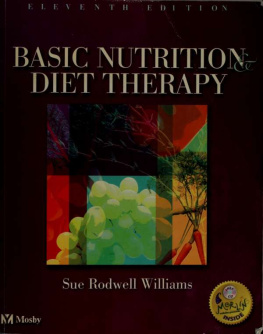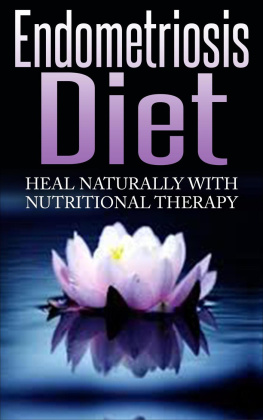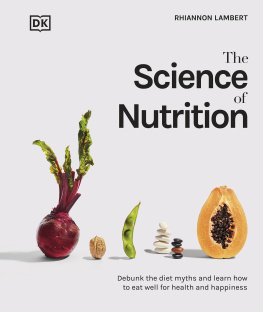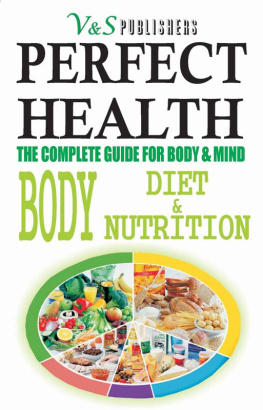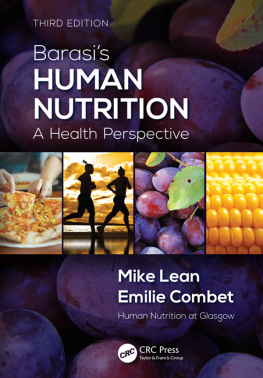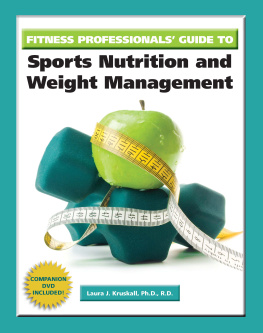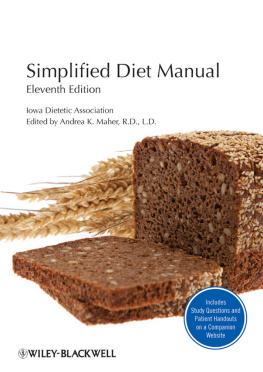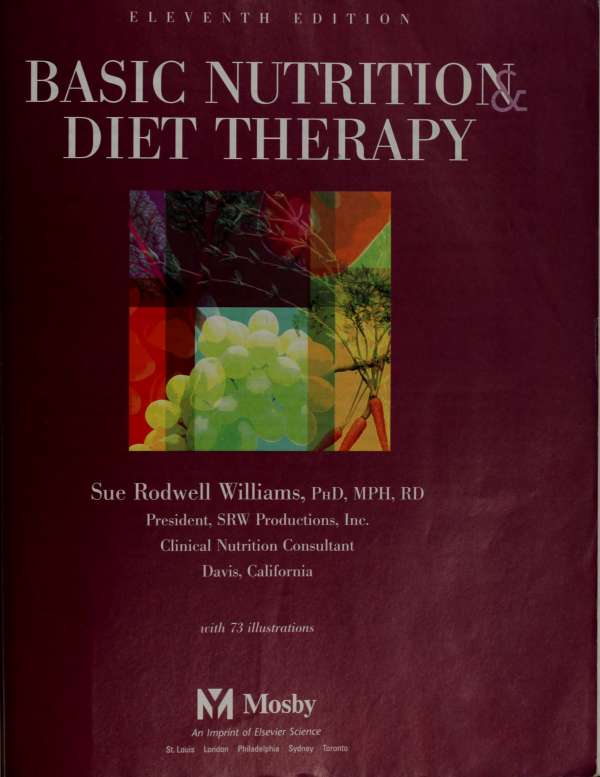This book made available by the Internet Archive.
Reviewers
Linda Bland, RN, MSN
Director, Vocational Nursing Program, Trinity Valley Community College, Palestine, Texas
Ruby M. Degener, RN, BS, MS
Assistant Professor of Nursing,
The Community College of Baltimore County
Catonsville Campus,
Baltimore, Maryland
Kelley DeVane-Hart, MS, RD
Assistant Professor of Nutrition, School of Nursing, Troy State University, Troy, Alabama
Delaine C. Furst, BS, MS, EdS
Associate Professor, Human Environment Science, Indian River Community College, Fort Pierce, Florida
Betty Kenyon, RD, LMNT
Adjunct Faculty,
Western Nebraska Community College
Scottsbluff, Nebraska;
Director of Consultant Services,
Panhandle Community Services,
Gering, Nebraska
Kelly Kohls, PhD, RD, LD
Owner,
Able Weight and Wellness Services,
Lebanon, Ohio
Anne O'Donnell, MS, MPH, RD
Instructor and Department Chair, Diet Tech Program Coordinator, Consumer and Family Studies, Santa Rosa Junior College, Santa Rosa, California
Sue Smith, RN, BSN
Assistant Professor,
PN Program,
Harlan Center,
Iowa Western Community College,
Harlan, Iowa
Sue G. Thacker, RN, BSN, MS, PhD
Professor,
Nursing,
Wytheville Community College,
Wytheville, Virginia
Janet Willis, RN, BSN, MS
Professor,
Harrisburg Area Community College,
Harrisburg, Pennsylvania
Preface to the Instructor
For many years, through 10 highly successful editions, this compact "little" book has provided a sound learning resource and a handy manual in basic nutrition for support personnel in health care. The new eleventh edition continues this important central focus.
The field of nutrition, however, is a dynamic human endeavor that has expanded and changed since the publication of previous editions. As always, we have tried to capture the excitement of the current, constantly developing nutrition knowledge and its application to human health in the modern format and style of this new edition.
Three main factors continue to change the modern face of nutrition. First, the science of nutrition continues to grow rapidly with exciting basic research. New knowledge in any science always challenges some traditional ideas and develops new ones, which is especially true when current nutritional science is applied to the modern movement in health care for younger populations and CO a preventive, early risk-reduction approach to managing chronic disease in our aging population. Second. the rapidly increasing multiethnic diversity of the United States population enriches our toixl patterns and presents varying health care needs. Third, the public is more aware and concerned about health promotion and the role of nutrition, largely because of media's increasing attention. Clients and patients are raising more questions and seeking intelligent answers. They want sound information to deal with common misinformation and fads, as well as with legitimate controversy. They want to be more involved in their own health care. Nothing, perhaps, is more human a part of that care than food.
This new edition continues to reflect these far-reaching changes. Its guiding principle is my own commitment, along with that of my publisher, to the integrity of the material. Our basic goal is to produce a new book for today's needs, with updated content, to meet the expectations
and changing needs of students, faculty, and practitioners of basic health care.
BASIC OBJECTIVES
This text is primarily designed for students and health care workers in beginning, assistance-level programs for practical or licensed vocational nurses (LVNs), as well as for diet technicians or aides. As in previous editions, a limited background in nutrition-related basic sciences is assumed, so basic concepts are carefully explained when introduced. With the changing public health awareness, however, the text also assumes that readers have an expanded general base in nutrition and health. Building on this interest, the general purpose of this text is to introduce some basic principles of scientific nutrition and present their applications in person-centered care in health and disease. In addition, my personal concerns are ever present, as follow: (1) that this introduction to the science and practice I love will continue to lead students and readers to enjoy learning about human nutrition in the lives of people and stimulate further reading in areas of personal interest; (2) that caretakers will be alert to nutrition news and questions raised by their increasingly diverse clients and patients; and (3) that contact and communication with professionals in the field of nutrition helps to build a strong team approach CO clinical nutrition problems in all patient care.
FEATURES
In a real sense, the eleventh edition of this classic text is a new book for our changing times and needs. To meet the ever present needs of a rapidly developing science and society, while continuing to use a clearly understood writing style, I have updated content areas and maintained the user-friendly format.
Preface to the Instructor
XI
Current chapter materials. All
chapters continue to include materials to help meet practice needs. In Part 1, Introduction to Basic Principles of Nutritional Science, Chapter 1 focuses on the directions of health care and health promotion, risk reduction for disease prevention, and community health care delivery systems with emphasis on team care and the active role of clients in educated self-care. A description and illustration accompanies the familiar Food Guide Pyramid. The Dietary Reference Intakes (DRIs), the most current dietary recommendations, are introduced and incorporated throughout chapter discussions in Part 1, as well as throughout the rest of the text. Current research updates all of the basic nutrient/ energy chapters in the remainder of Part 1. In Part 2, Nutrition Throughout the Life Cycle, Chapters 10, 11, and 12 reflect current material on human growth and development needs in different parts of the life cycle. Current Academy of Science guidelines for positive weight gain to meet the metabolic demands of pregnancy and lactation are reinforced. Positive growth support for infancy, childhood, and adolescence is emphasized. The expanding health-maintenance needs of a growing adult population through the aging process focus on building a healthy lifestyle to reduce disease risks.

